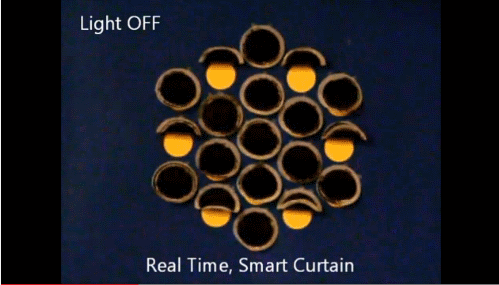January 9, 2014
Berkeley — Forget remote-controlled curtains. A new development by researchers at the University of California, Berkeley, could lead to curtains and other materials that move in response to light, no batteries needed.
A research team led by Ali Javey, associate professor of electrical engineering and computer sciences, layered carbon nanotubes - atom-thick rolls of carbon - onto a plastic polycarbonate membrane to create a material that moves quickly in response to light. Within fractions of a second, the nanotubes absorb light, convert it into heat and transfer the heat to the polycarbonate membrane's surface. The plastic expands in response to the heat, while the nanotube layer does not, causing the two-layered material to bend.
"The advantages of this new class of photo-reactive actuator is that it is very easy to make, and it is very sensitive to low-intensity light," said Javey, who is also a faculty scientist at the Lawrence Berkeley National Lab. "The light from a flashlight is enough to generate a response."
The researchers described their experiments in a paper published this week in the journal Nature Communications. They were able to tweak the size and chirality - referring to the left or right direction of twist - of the nanotubes to make the material react to different wavelengths of light. The swaths of material they created, dubbed "smart curtains," could bend or straighten in response to the flick of a light switch.
"We envision these in future smart, energy-efficient buildings," said Javey. "Curtains made of this material could automatically open or close during the day."
Other potential applications include light-driven motors and robotics that move toward or away from light, the researchers said.
Other co-authors include Xiaobo Zhang, study lead author and former Ph.D. student in the Javey Lab, and researchers from the Berkeley Sensor and Actuator Center.
The National Science Foundation and the Department of Energy helped support this work.
Engineers have created a new light-reactive material made up of carbon nanotubes and plastic polycarbonate. This video demonstrates experimental “curtains” that are engineered to either open or close in response to light. (Video courtesy of Javey Research Group)
MORE INFORMATION
Photoactuators and motors based on carbon nanotubes with selective chirality distributions (Link to journal abstract)















